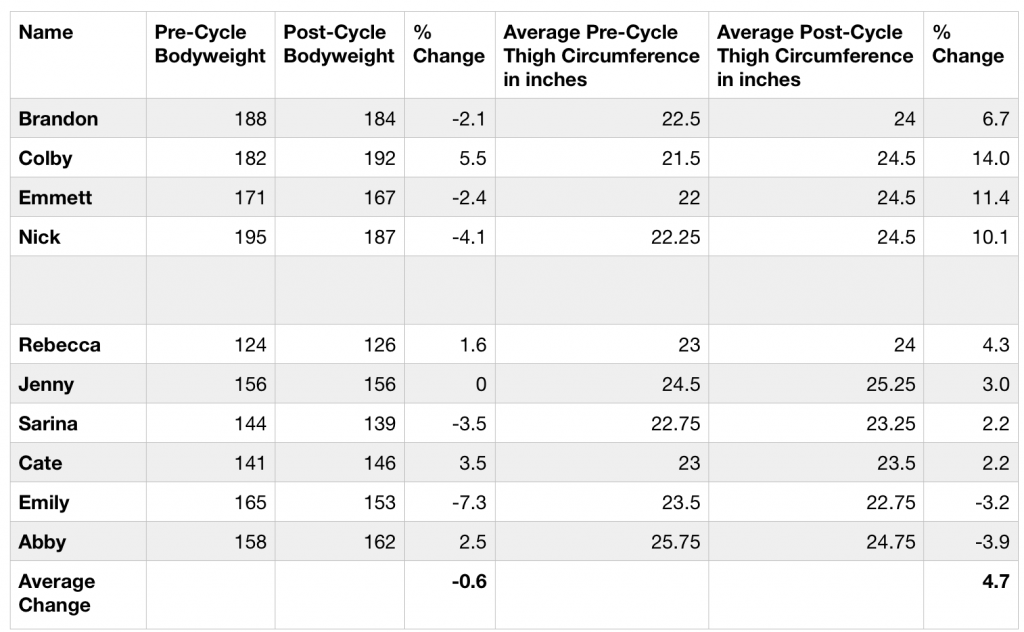Above – this cycle included leg blasters in a weight vest for a few unlucky lab rats ….
This article was first published in November 2018.
By Rob Shaul
Backcountry skiing has already begun here in the Tetons, and next week, the local resorts open. At MTI, this week my lab rats completed our intense, 7-week Dryland Ski Training Cycle.
I use these fall cycles to not only prepare our local pro skiers and others for the ski season but also try and test new programming.
But in designing the cycle, and from past years’ experience, I knew the programming would likely have a hypertrophic effect on quad size (add muscle), and wanted to assess the change.
In an earlier article, I described the programming details and changes for this year’s effort. Overall, the cycle was sport-specifically designed to prepare athletes for lift assisted alpine skiing, backcountry skiing, and side-country skiing. It had a significant emphasis on building eccentric leg strength, leg lactate tolerance, chassis integrity, and uphill hiking/skinning endurance.
As well, two days per week the plan had some room for some upper body work, and the programming deployed hypertrophy volume for this upper body work (sets of 10-15 reps).
Pre-cycle, we assessed the bodyweight and average quad circumference of over 20 lab rats. Ten lab rats were still standing at the end of the cycle after attrition (two to pre-existing injury), others either quit or couldn’t keep up with the programming.

The programming had a significant work capacity and endurance component, so I was curious how the fat-burning effect of this programming would balance out with the hypertrophy effect of the leg and upper body work.
Four of the 10 lab rats lost weight during the cycle, 5 gained weight, and one saw no change. Overall, the average was a small .6% weight loss.
Eight of the 10 lab rats who completed the entire cycle added quad muscle – with the overall average increase of 4.3% or about 1 inch. Two lab rats actually lost quad circumference. One (Emily) lost the most weight during the cycle, and it’s possible this loss quad size was fat. The other (Abby) gained overall weight during the cycle but had a significant body composition change – from fat to muscle.
The true effectiveness of the programming we won’t know for a few weeks – after the lab rats get out on the slopes and report back their early season fitness.
Questions, Comments, Feedback? Email rob@mtntactical.com
Learn More About MTI’s Dryland Skiing Training Program
STAY UPDATED
Sign-up for our BETA newsletter. Training tips, research updates, videos and articles - and we’ll never sell your info.
